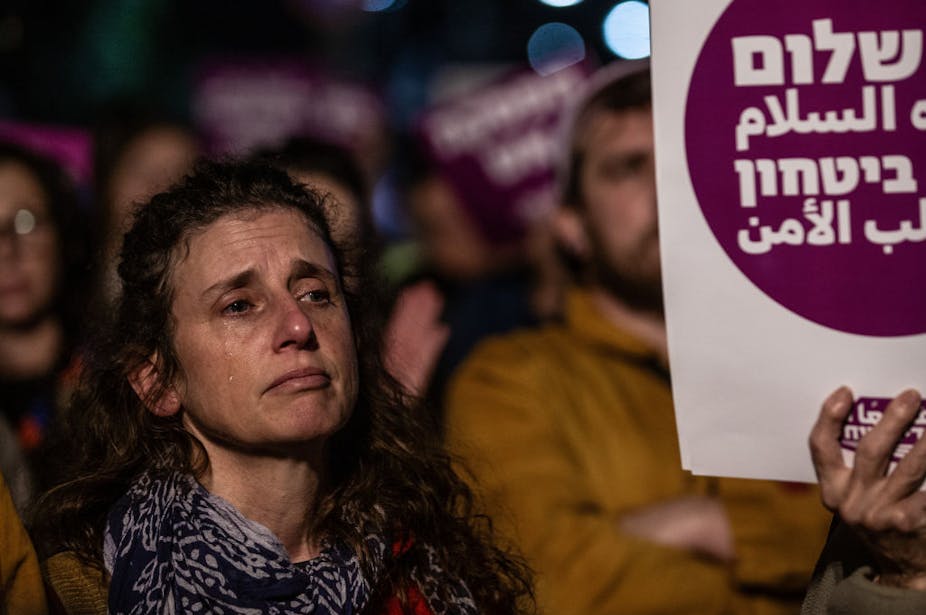The months since Hamas’ attacks on Oct. 7, 2023, have been excruciating ones for Israeli peace activists. As the country rallies behind the war effort, critics have been arrested and condemned by opponents who say the attacks proved how misguided the peace movement is.
But in activists’ eyes, the horrific violence of Oct. 7 and Israel’s sweeping military response only prove its urgency. Vivian Silver, who spent a decade leading Women Wage Peace – a solidarity group of Israelis and Palestinians – was one of several peace activists murdered that day. “If we want a future here, we have to make the conflict a thing of the past,” her son Yonatan Zeigen wrote in an op-ed after her death.
For some activists, in other words, Oct. 7 only underscored the urgency of their cause. Yet the peace movement has always been diverse and often fragmented. In reality, there are multiple movements, each with its own definition of peace. As a scholar of religion, ethics and politics, I have traced how divergent accounts of Israel’s founding connect to different visions of justice.
The ‘peace camp’
The Israeli demographics most associated with the “peace camp” are predominately Ashkenazi Jews, meaning they are descended from communities in Central and Eastern Europe. They also tend to be secular, meaning they do not closely observe traditional Jewish religious law.
Even within this larger camp, however, there are divergent perceptions of justice, shaped by how people understand the root causes of the conflict. Did it truly start in 1917, when a British lord promised a home for Jews? In 1948, with Israel’s War of Independence – which Palestinians experienced as the Nakba, their “catastrophe”? Or is the most important date 1967, when Israel occupied the Golan Heights, east Jerusalem, the West Bank and the Gaza Strip?
For the most part, this “peace camp” believes “Israel proper” consists of land within the “Green Line,” set by the armistice agreements at the end of the 1948 war. The Green Line does not include the territories Israel has occupied since the end of the 1967 war, which most of the peace camp considers a morally wrong occupation.
More broadly, their vision is grounded in preserving Israel as a democracy with a Jewish majority. This necessitates the creation of a sovereign Palestinian nation-state in the occupied territories.
A prominent example of a secular group accepting the Green Line as a peace premise is the once-robust Peace Now movement, created in 1978 by Israeli veterans. They argue, using human rights and international law, that a permanent occupation will threaten the character of Israel as a Jewish democracy.
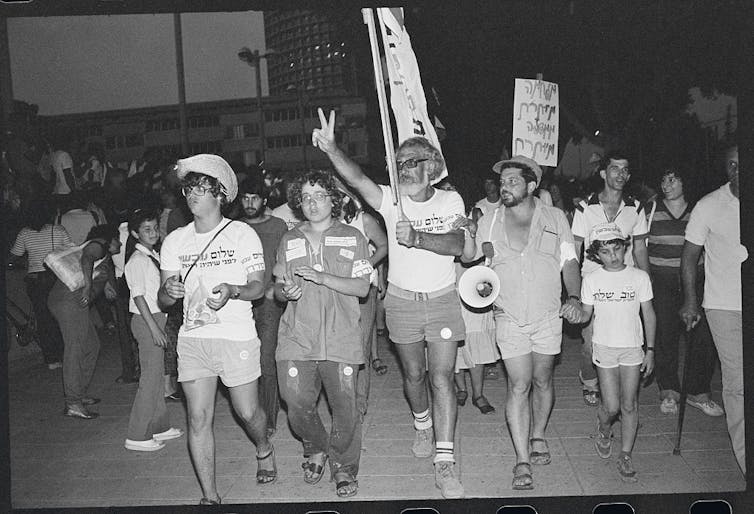
… and its dissenters
Ever since the early days of Zionism, however, other Jews have challenged the movement’s basic objective of creating a Jewish-majority state, given the reality that other groups of people, in addition to Jews, already lived in historic Palestine. For example, the group Brit Shalom, established in 1926 by European Jewish intellectuals, envisioned a binational state that would include equality for non-Jewish Palestinian communities.
In Brit Shalom’s view, a commitment to democratic principles contradicted ambitions for creating a majoritarian Jewish state, which they predicted would depend on driving out Palestinians and preventing their return.
Other contemporary secular groups that are mostly made up of Jewish Israelis also oppose the Green Line as a basis for peace building. Zochrot, for example, emphasizes the Nakba of 1948 as a root cause of the conflict. Therefore, they advocate for Palestinian refugees’ right of return, which is central to Palestinians’ own conceptions of justice.
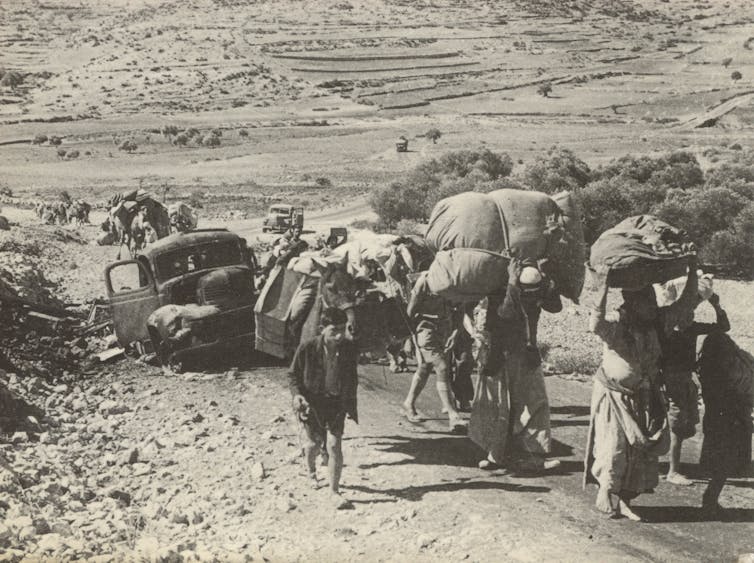
Other critics of the mainstream peace movement have criticized it for ignoring the social justice struggles of non-Ashkenazi Jewish Israelis, such as Arab Jews or “Mizrahim” and Ethiopian Jews, or connecting those issues with Palestinians’ experience.
Palestinian voices
The continuous expansion of Israeli settlements in the West Bank has eroded the Green Line as the basis for peace. This de facto annexation, as many analysts call it, makes it increasingly unlikely that “peace” could mean most Israelis living within the line and most Palestinians outside it.
Yet with the erosion of the Green Line, various organizations are reemphasizing a binational vision of a single state, or two states joined in a confederation. Compared with the “mainstream” peace camp, some of these groups have more Palestinian representation, coming mostly from Palestinian citizens of Israel.
A Land for All: Two States One Homeland, known as ALFA, was formed in 2012 and is co-led by Palestinian and Jewish Israelis. In events after Oct. 7, members grappled with their grief by resolving to imagine a political future together.
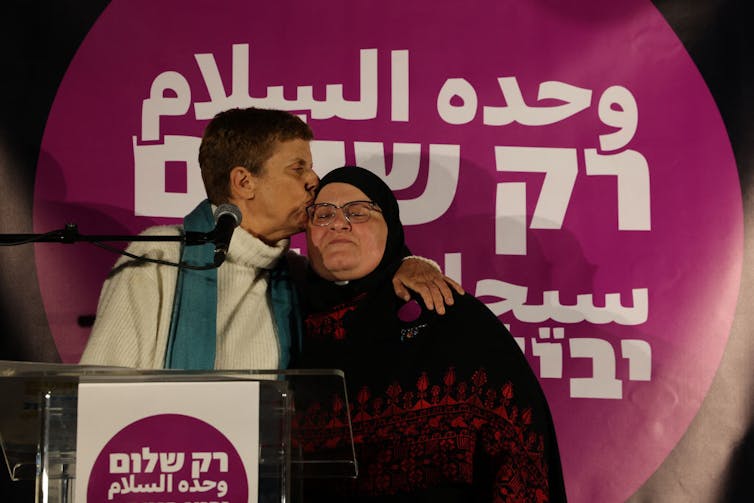
ALFA’s foundational assumption is that “both people belong in the whole land.” While it believes that, realistically, Jewish settlers will remain in the territories occupied in 1967, it envisions them becoming Israeli residents of a future State of Palestine – one half of a larger confederation with the state of Israel.
Similarly, the organization Standing Together sent two representatives – one Jewish Israeli, one Palestinian Israeli – to the United States together to hold events with the message that “both Jewish people and Palestinians are going to stay on this land. No one is going anywhere.”
Notably, the Palestinian members of groups seeking Palestinian-Israeli dialogues tend to be Israeli citizens from within the Green Line, with a few exceptions, such as Combatants for Peace – a group of Palestinians and Jews committed to nonviolence but made up of former fighters.
However, after decades of “peace process,” many Palestinians interpret coexistence initiatives as a form of normalizing the occupation.
The Faithful Left
The tension between Israel’s Jewish and democratic identities has been present since before the state’s founding. Under the current hard-line government, however, critics fear the state has been relinquishing the democratic part in favor of Jewish supremacy.
Religious politicians have been some of the most visible advocates for measures that decrease the likelihood of a contiguous Palestinian sovereign state, such as by constructing new settlements. Yet the current right-wing coalition has provided an impetus for more Israelis who are observant Jews to join peace efforts: the “Faithful Left,” or Smol Emuni in Hebrew.
The movement was born when hundreds showed up to a Jerusalem conference in January 2023, discussing their discomfort with how Jewish tradition was being used politically, and a second conference was held in February 2024. Because many of the Faithful Left are products of religious Zionist schools, their key advantage within the peace movement is the ability to challenge arguments for annexation or domination on religious grounds.
Older groups such as Rabbis for Human Rights, whose members range from humanist to Orthodox, have also drawn on religious ideas for decades.
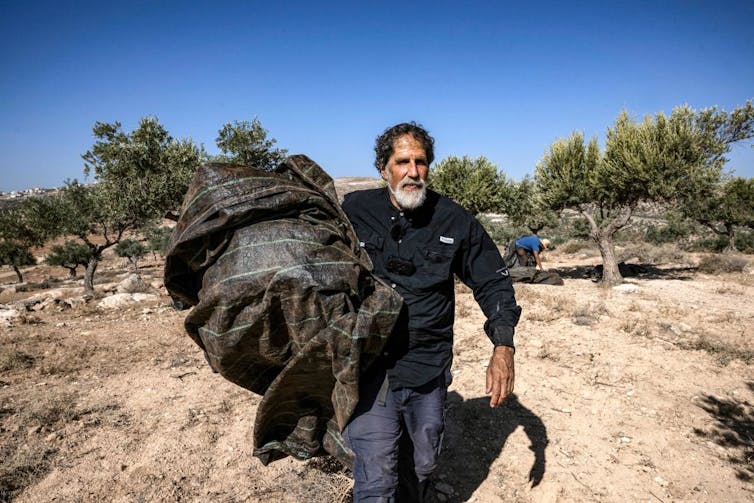
Some activists within the Faithful Left have also been a part of Bnei Avraham, a group that shows solidarity with Palestinians by building relationships in the West Bank – specifically Hebron, where Palestinians routinely experience violence and harassment.
Secular anti-occupation groups such as Ta'ayush take this idea one step further by trying to provide in-person protection against violence. For example, Ta'ayush activists walk kids to school or accompany Palestinian shepherds as a buffer to prevent harassment.
The erosion of the Green Line has challenged many peace groups’ visions for peace and justice, as diverse as those are. Even more fundamentally, it has reopened the question of what it means for Israel to be Jewish and democratic – a question at the heart of Israeli peace activists’ challenges today.

